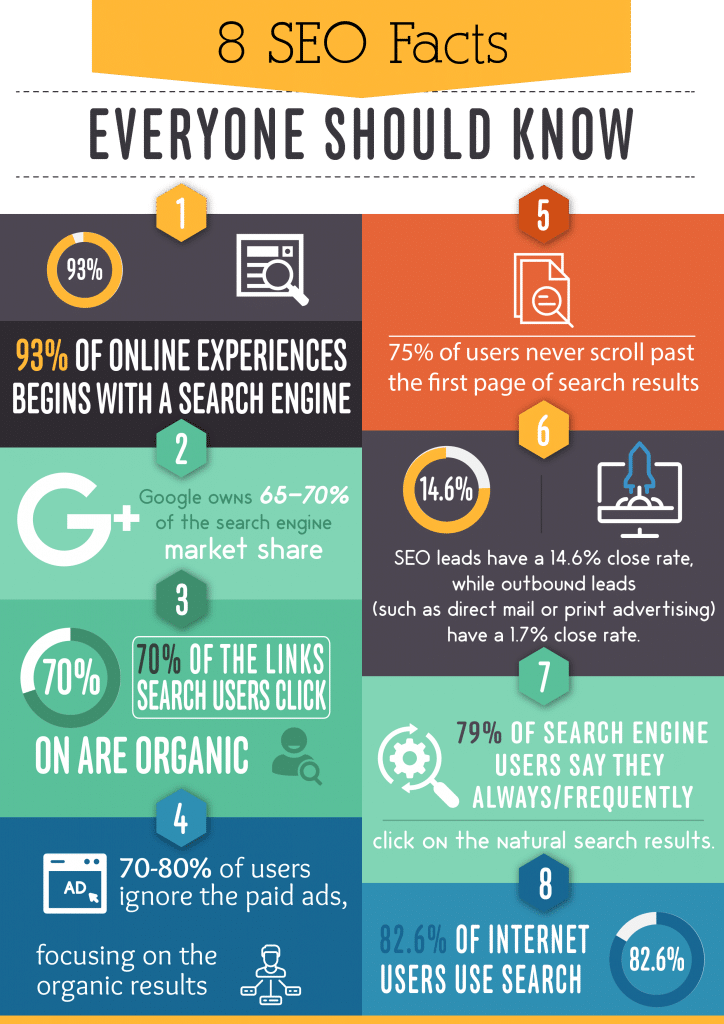 In the ever-evolving digital marketplace, having a robust e-commerce website is crucial for business success. However, just having an online store isn’t enough. Optimization is the key to turning your e-commerce site into a powerful sales engine. This article delves into the importance of optimizing e-commerce websites, highlighting the benefits and providing facts and statistics to underscore its significance in generating online sales. It is hard to ignore the importance of optimizing retail websites for generating sales. Talk to retail marketing experts for more information.
In the ever-evolving digital marketplace, having a robust e-commerce website is crucial for business success. However, just having an online store isn’t enough. Optimization is the key to turning your e-commerce site into a powerful sales engine. This article delves into the importance of optimizing e-commerce websites, highlighting the benefits and providing facts and statistics to underscore its significance in generating online sales. It is hard to ignore the importance of optimizing retail websites for generating sales. Talk to retail marketing experts for more information.
Understanding E-commerce Optimization
E-commerce optimization refers to the process of improving various aspects of an online store to enhance user experience, increase traffic, and boost conversion rates. This involves fine-tuning elements such as website speed, mobile responsiveness, user interface, SEO, and more. Effective optimization ensures that visitors not only find your site but also stay, browse, and make purchases.
The Significance of Optimization
Enhanced User Experience (UX)
A seamless and intuitive user experience is vital for retaining customers and encouraging them to make purchases. According to a study by Forrester, a well-designed user interface could increase a website’s conversion rate by up to 200%, while a better UX design could yield conversion rates up to 400%. Optimizing navigation, simplifying the checkout process, and ensuring mobile-friendliness are key factors in enhancing UX.
Increased Site Speed
Website speed is a critical factor in e-commerce success. Google’s research indicates that 53% of mobile users abandon sites that take longer than three seconds to load. Slow loading times can lead to higher bounce rates and lost sales. By optimizing images, leveraging browser caching, and using Content Delivery Networks (CDNs), businesses can significantly improve site speed and, consequently, user satisfaction and sales. Page speed is critical. The importance of optimizing retail websites has much to do with page speeds.
Mobile Optimization
With the surge in mobile shopping, optimizing your e-commerce site for mobile devices is imperative. Statista reports that by 2023, mobile commerce will account for 72.9% of total e-commerce sales. Ensuring that your site is responsive and offers a seamless mobile shopping experience can capture this growing segment of mobile shoppers and drive more sales.
Benefits of E-commerce Optimization
 Improved Search Engine Rankings
Improved Search Engine Rankings
Search Engine Optimization (SEO) is a cornerstone of e-commerce optimization. Higher search engine rankings mean increased visibility and traffic. According to a study by BrightEdge, 68% of online experiences begin with a search engine. By optimizing product descriptions, using relevant keywords, and improving site architecture, businesses can enhance their search engine rankings, attracting more potential customers.
Higher Conversion Rates
Optimization directly impacts conversion rates. A well-optimized site that offers a great user experience and fast loading times encourages visitors to make purchases. The Baymard Institute reports that the average cart abandonment rate is 69.57%. By optimizing the checkout process and reducing friction points, businesses can lower abandonment rates and increase conversions.
Increased Customer Retention
Customer retention is more cost-effective than acquisition. E-commerce optimization helps create a positive shopping experience, encouraging repeat purchases. According to Adobe, returning customers are 9 times more likely to convert compared to first-time shoppers. By providing personalized recommendations, simplifying reorders, and offering loyalty programs, businesses can retain customers and foster long-term relationships.
Better Analytics and Insights
Optimized e-commerce sites provide better analytics and insights, helping businesses understand customer behavior and preferences. Tools like Google Analytics can track user interactions, identify popular products, and reveal drop-off points in the sales funnel. These insights enable businesses to make data-driven decisions and continuously improve their strategies for better sales outcomes.
Competitive Advantage
In a crowded e-commerce landscape, optimization can provide a competitive edge. Businesses that invest in optimizing their websites are better positioned to attract and retain customers compared to those that don’t. A survey by Unbounce found that 70% of consumers base their purchasing decisions on how fast a website loads. Therefore, businesses that prioritize optimization stand out in terms of performance and user experience.
Key Areas of E-commerce Optimization
Product Pages
Product pages are the heart of any e-commerce site. Optimizing these pages involves high-quality images, detailed descriptions, customer reviews, and clear calls-to-action (CTAs). According to Salsify, 88% of consumers say that detailed product content is extremely important to their purchasing decision.
Checkout Process
A streamlined checkout process reduces cart abandonment. The Baymard Institute’s research highlights that 18% of US online shoppers have abandoned an order due to a long or complicated checkout process. Simplifying this process by minimizing form fields, offering multiple payment options, and ensuring security can significantly improve conversion rates.
Site Navigation
Easy navigation helps users find what they’re looking for quickly. Implementing a clear menu structure, intuitive category pages, and a robust search function can enhance user experience. According to Forrester, 50% of potential sales are lost because users can’t find what they’re looking for.
Mobile Responsiveness
As mentioned earlier, mobile optimization is crucial. Google’s Mobile-First Indexing means that the mobile version of your site is considered the primary version. Ensuring your site is responsive and offers a smooth mobile shopping experience is essential for maintaining search rankings and user satisfaction.
SEO Best Practices
Implementing SEO best practices involves optimizing meta tags, using alt text for images, creating engaging content, and building backlinks. A report by Ahrefs states that 90.63% of pages get no organic search traffic from Google. Proper SEO can help your e-commerce site rank higher, attract organic traffic, and increase sales.
Conclusion
Optimizing your e-commerce website is not just about improving its appearance or functionality; it’s about creating an environment where customers feel comfortable and compelled to make purchases. The benefits of optimization are multifaceted, ranging from improved user experience and higher search engine rankings to increased conversion rates and customer retention.
Investing in e-commerce optimization is a strategic move that can lead to substantial sales growth. By focusing on key areas such as product pages, checkout processes, site navigation, mobile responsiveness, and SEO, businesses can enhance their online presence and drive more sales. In today’s competitive digital landscape, optimization is not just an option; it’s a necessity for success.
By understanding and implementing these optimization strategies, businesses can unlock the full potential of their e-commerce websites, ensuring sustainable growth and profitability in the long run. Gain more success as a retailer with highly performing retail websites. The importance of optimizing retail websites can be discussed with retail business experts. Give us a call.









